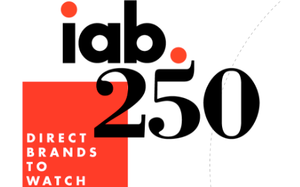
The most
disruptive challenge to conventional media-based, brand-building advertising happened during the earliest days of Internet advertising, when agencies and brand marketers failed to define emerging
digital platforms like the Internet -- and ultimately, mobile -- as a branding medium.
Instead, direct-response marketers embraced the medium because of its real-time immediacy, access to data
to track and ability to modify conversions and sales on-the-fly, and pure ROI efficiency.
According to some experts, that trend is about to accelerate as conventional brand marketers throw in
the towel altogether and begin leveraging digital media to become direct sellers themselves.
The reason for the shift, which is already beginning to happen, according to Publicis
Groupe Chief Growth Officer Rishad Tobaccowala, isn’t just because conventional brand-building media models aren’t working as well as they used to. It’s because big brands are
realizing that the only way to have a relationship with and understand their consumers, is to cut out the middlemen and have a relationship with them directly.
advertisement
advertisement
“Over the next
three to four years, it’s going to happen, because three to four companies own all the data," Tobaccowala said during the opening of CIMM’s recent Cross-Platform Media Measurement Summit
in New York City.
The “three to four companies” Tobaccowala was referring to were big digital platforms like Google, Facebook, Amazon and Apple, which have leveraged
their “walled garden” position to become the intermediaries between brands and their consumers, optimizing both ends for their bottom lines.
While this trend has
benefited the shareholders of the digital platforms, it has marginalized the role of brand marketers, especially big consumer packaged goods companies that historically used mass media and advertising
to build relationships with consumers.
“More and more of them are selling directly,” Tobaccowala said, adding: “Once you start selling directly, you begin to
understand what the real power of the data is.”
Tobaccowala said he’s aware of “major CPG companies” that have a goal of having “25% of their sales
direct” in the next year.
“Once you have that,” he said, “you begin to have some very interesting leverage.”
I’ve been thinking
about Tobaccowala’s comments for the past couple of weeks. So when the Interactive Advertising Bureau released a new report at its annual Leadership Conference for its members Monday morning
listing “250 direct brands worth watching,” I was sensitized and took notice.
The report, which is a collaboration with Dun
& Bradstreet, is a compilation of 250 companies -- many of which are only a few years old -- that were conceived 100% on the basis of direct-to-consumer digital media access. This means more than
just having commerce-based websites, but also leveraging an entire digital ecosystem to promote, be discovered, generate leads, trial, conversion -- and, most important, relationships with
consumers.
“The list is ample evidence of the tidal change occurring in how brands and customers interact. Congratulations to those who made the cut,” the IAB notes in
the report. Interestingly, none of those that made the cut is what would be considered a major CPG brand.
“‘Direct Brands’ are gradually supplanting the
‘Indirect Brands’ that have dominated the consumer economy since its origins in the late 1870s,” the IAB asserts in a statement issued with the release of the report.
If true, Tobaccowala’s prediction that “indirect brands” will be going increasingly direct, makes sense, so watch for an explosion of consumer commerce options as the
“IAB 250” and the Fortune 500 battle for share of consumers’ minds, pocketbooks, data -- and most important of all, relationships.
This is already happening,
according to a report released last week by Wall Street equities firm UBS.
Among other things, the report notes that only 115 of the top 200 brands in 2016 were also in the top 200
in 2006. The point being that 85 of them were new brands that didn’t exist before.
The report doesn’t update that for 2017 or predict what it will be in 2018, but a
survey of 350 global marketing executives and 500 CFOs in the U.S. by UBS suggests that Tobaccowala is right and they’re already fighting back. While conventional brand-building media continues
to expand, the fastest-growing areas of their marketing budgets are CRM (customer relationship management), direct response, and social media management, as well as internal staffing, presumably to
bring more of the mastery of those direct relationships in-house (see table).
